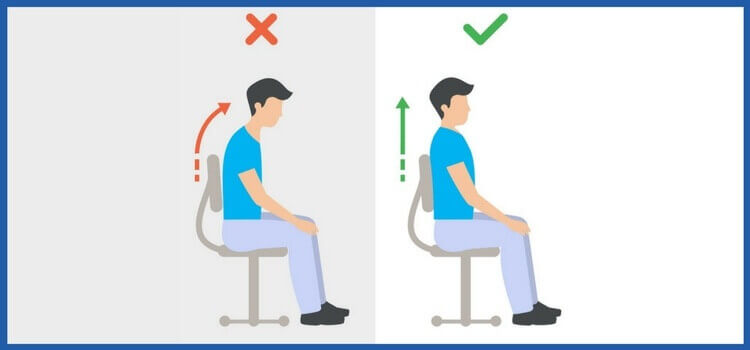
Correct Office Posture to Avoid Back Pain
Lower back pain can be caused or worsened by prolonged periods of sitting in one’s office chair. Most people who sit in office chairs for prolonged periods have the tendency to slouch over or slouch down while sitting. Such a posture can lead to overstretching of the spinal ligaments and straining of the spinal discs. Good sitting posture can be achieved and maintained with the help of an ergonomic office chair. To get all the benefits of an ergonomic office chair, one must adjust the chair to suit their body’s proportions.
The proper adjustment of an ergonomic office chair will lead to maximum comfort and minimum stress on the back muscles and spinal structures. Establishing the required height of your desk or workstation should be the first step to carry out while setting up your office chair. Your height and the type of work that you do will determine the height of your workstation or desk. After the desk/workstation has been set up, the next step is to adjust the office chair based on your physical proportions. Let us look at how to ensure that your office chair is adjusted according to your physical proportions.
First, sit in the office chair while being as comfortably close to the desk as possible while keeping your upper arms parallel to your spine. After that, if the elbows are not at a 90-degree angle when you keep your hands on the desktop or keyboard, you will need to make the necessary adjustments to your office chair. Make sure that your bottom is pressed against the chair’s back. There should be a cushion that makes your lower back arch a little so that you don’t slouch down or slump forward when you get tired after sitting for prolonged periods. This lower back support minimizes the load exerted on one’s back. It is important to resist the tendency to slump forward or slouch down while working as this exerts a lot of stress on the lower back structures, especially the lumbar discs.
The right eye level is also an important consideration. Sit in your office chair and face your computer screen. Close your eyes and open your eyes slowly – when you open them, your gaze should be directed at the computer screen’s center. If it is not, you will need to make the necessary adjustments to make sure that the right eye level is achieved. You should make the necessary adjustments to the armrest of your office chair so that it lifts your arms a little at the shoulders, taking the strain off the shoulders and upper spine, and thus reducing the likelihood of slouching forward while sitting.
So apply these steps to achieve the right posture while sitting in your office chair. However, even with the best adjustments and the best chair, prolonged periods of being in one static position is not recommended. So it is important to take a break every now and then to stand, walk and stretch. If even after applying all these steps you still suffer from back pain, or you require spine surgery, you should approach only a reputed spine clinic like Shalby Hospital – one of the best spine clinics in Ahmedabad. You should only trust hospitals with a highly experienced and skilled team so as to get the best results.
Spine conditions can be crippling. Some spinal conditions can be treated by medications, exercise, and lifestyle changes. The severe conditions, however, require surgical methods. The traditional open surgery accounts for more complications, increased hospital stay, post-surgical pain and pronounced discomfort. This is...
Sciatica is a pain that radiates along the radiate nerve and is experienced in the back, around the hips, and outer or the backside of the leg. This is usually caused due to compression in the sciatic nerve which runs down either...
TYPES OF SPINE SURGERIES Vertebroplasty and Kyphoplasty: These are used to treat compression fractures of the vertebrae caused by osteoporosis. Spinal Laminectomy/Spinal Decompression: This is done when spinal stenosis brings about a narrowing of the spinal canal which results in pain, numbness,...